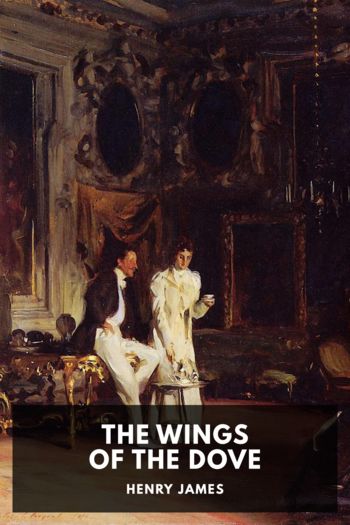Da Vinci's Bicycle - Guy Davenport (e novels to read TXT) 📗

- Author: Guy Davenport
Book online «Da Vinci's Bicycle - Guy Davenport (e novels to read TXT) 📗». Author Guy Davenport
Skepticism has no power whatever over the veracity of a photograph. It is fact and is accepted by all minds as evidence. The Soviets have gone through all their photographs of the revolution and erased Trotsky. They have put Stalin at Lenin’s side even when he was a hundred miles away eating borshch. Since the invention of the photograph we have ceased to dream in color.
On the door of the house in Toledo where photography was invented La Sociedad de la Historia Fotográfica placed a brass plate in 1934. Betún y Espliego made a speech. Ohio, he said, is a paradise on this earth. He alluded to the blue Susquehanna, to the sweet villages where, as Sarmiento said in his Viajes, there is more material progress and more culture than in all of Chile and Argentina combined.
An exhibit of photography in historical perspective was mounted that year in the Louvre. The spectators saw photographs of Ibsen walking in the frescade of a Milanese garden, his hands behind his back, Corsican gypsies around a campfire, Orville Wright shaking hands with Wilbur Wright before they flipped a quarter to see who would make the world’s first guided flight in a craft heavier than air, Sir Marc Aurel Stein on the Great Wall of China, Jesse James playing a Jew’s harp, T. E. Lawrence entering Damascus under the banners of Allah, The Empress Eugenia saying her prayers, Carnot and the Shah of Persia going aloft in a balloon, La Duse reclined on a wicker chaise, Ugo Ojetti and his mama, ladies of fashion kneeling in the street as the Host passes (the Sicilian brass band looking strange beside priests in embroidered robes), Neapolitan convicts going down long stone stairs, emigrants filing through a Roman arch on their way to the boat train and Ellis Island, Allenby making a Turkish band play The Crescent of Islam Moves Like a Scythe Across the Infidel into a telephone held by a Sergeant Major of the Royal Welsh Dragoons, Queen Victoria extending a finger to an Irish member of Parliament.
In 1912 Betún y Espliego abandoned his history of photography to devote his life to getting a clear picture of the Loch Ness Monster. The last photograph we have from his hand is a group portrait of the Royal Scots Greys posed with His Imperial Majesty Nikolai II, Colonel of the Regiment. It is an early example of color photography, and the Tsar’s face is rusty orange, his beard kelp green. All the hues of the plaids are wrong, and the Elders of Edinburgh therefore refused to allow the picture to be exhibited in the Castle, though George V looked at it privately, and the Metropolitan of Moscow and Neva had one framed in silver and rubies for the high altar of SS. Boris and Gleb.
Betún y Espliego suffered awful loneliness in his vigil on the gray shores of Loch Ness. The bagpipes ruined his kidneys, the porridge his stomach. The religion of the locals seemed to be some revolting kind of speculative philosophy.
His wife Lucinda came to the edge of Scotland and shouted over the wall that he was to come home immediately to Madrid. Franco and the Falangistas were at the gates of Barcelona. Their children wept the large part of the time. She had not heard a string quartet in six months. Was this place, she shouted louder, the land of the Moors?
Wasps the meanwhile built several phalansteries in a china cabinet and the three corners of a ceiling in the house where photography was invented in Toledo. Young wasps practiced clapfling and flip around the twenty-watt bulb of the electric light, and the queen of the colony droned in courtly splendor above the radio, the sound of which she took to be a fine summer storm.
There was no darker moment, a voice said from the radio, than when man fixed images of grandmothers and wars on paper with nitrate of silver, the pylons of Luxor and herds of buffalo, no profounder undoing of the spirit, so that the Spanish people must now see the savages of utmost Africa in all their immodesty, Protestant women in dresses that leave bare their ankles and elbows for all the world to see, zeppelins blooming into a cloud of fire, battlefields, refrigerators, and bicycles, leaving the unseen and invisible realities of devotion and meditation in that realm of the mind where the sleep of reason breeds monsters.
A little boy whose hair was a gorse of snarled rust and whose eyes were as blue as an October sky snuck one day as close as he dared to the caravan where Foco Betún y Espliego lived on constant lookout for the Loch Ness Monster. It was a morning when Betún had set up his camera on a tump of daisies and was under the black cloth, the sensitized plate ready in his hand, peering out through the lens at the waste waters that lay as still as a sodden carpet under a desolation of clouds.
— Och, said the bairn from a distance, ye’re nae a ceevilized mon t’ be sae enthralled by that trippid bonnet.
For response there was a swarthy hand waving him away from under the cloth.
— Rest ye easy, said the boy. I wadna coom closer for a great jool.
One day the boy brought the free-kirk minister, who had heard of photography, a French and frivolous art. He shouted his opinion that it would come to nothing. On another, he brought the laird of the manor and his two daughters. He charged a farthing a head for the service. Their parasols and curls danced in the wind, and the laird pronounced Betún an idiot.
— It’s the munster lurks in





Comments (0)